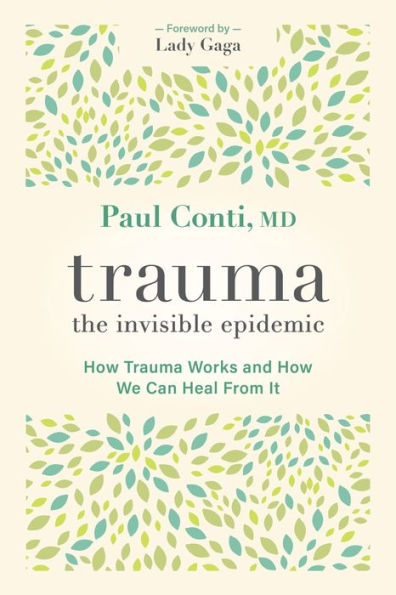Table of Contents
Foreword Lady Gaga, Stefani Germanotta xiii
Introduction 1
Part 1 What Trauma Is and How It Works 7
Chapter 1 How We Talk about Trauma 9
Analogies for Trauma 9
The Trauma Virus 9
Pollution 12
Parasites 12
Pre-Existing Conditions 14
I've Got a Story to Tell 14
Four Vignettes 15
Chapter 2 Types of Trauma and Post-Trauma Syndromes 19
Acute Trauma 19
Chronic Trauma 20
Vicarious Trauma 20
Post-Trauma Syndromes 21
Sometimes There Is No Vacation 25
Chapter 3 Shame and Its Accomplices 29
A Healthier You, a Healthier Us 30
Accomplice: Shame 31
Antidote: Uncovering Self-Talk 31
Antidote: Reattributing Shame 31
Accomplice: Poor Self-Care 31
Antidote: Clarifying What People Deserve 31
Antidote: Describing What You Would Change 32
Accomplice: Risk-Taking Behaviors 32
Antidote: Reviewing Motivations 32
Antidote: Investigating the impulse 32
Accomplice: Poor Sleep 32
Antidote: Relaxing Body and Mind 32
Antidote: Employing Imagery 32
Accomplice: Mood Decline 33
Antidote: Activating Body and Mind 33
Antidote: Exploring Your Stressors 33
Accomplice: Anxiety 33
Antidote: Limiting Media 33
Antidote: Identifying Triggers 33
Accomplice: Damaged Immunity 33
Antidote: Taking Care of Your Body and Mind 33
Accomplice: Nightmares and Flashbacks 33
Antidote: Seeking Assistance 33
I Need to Learn from Him 34
Shame Works Best in the Dark 37
The Secret Lessons of Trauma 37
My Family's Experience with Shame 42
Chapter 4 A Conversation with Stephanie zu Guttenberg 43
Chapter 5 Compassion, Community, and Humanity 55
Honey, You're the First One Who's Noticed 56
Trauma Changes the Map 58
Uncle Rango, the War Hero 59
Part 2 The Big Picture-The Sociology of Trauma 63
Chapter 6 The Problems with Trauma and Health Care 65
Vomit Bag 66
Therapeutic Antidote; What to Look for in a Therapist 69
Doc, I'm Dead and You're a Busy Man 71
The Revolving Door 73
Chapter 7 A Conversation with Daryn Reicherter, MD 77
Chapter 8 Social Ills, Social Trauma 89
The Boy in the Gas Mask 90
Three Crises 91
Am I Doing a Bad Job? 92
Trauma and the Assault on Compassion, Community, and Humanity 94
Chapter 9 Social Ills, Social Solutions 97
Antidote: Fostering Humility 97
Antidote: Remembering Our Core Values 98
The Murder That Was and the Assault That Wasn't 99
Antidote: Opening Ourselves to Others 101
Antidote: Managing Fear 101
Antidote: Avoiding Quick Fixes 102
Part 3 An Owner's Manual for Your Brain 105
Chapter 10 What Trauma Does to Thought 107
Logic, Emotion, and Memory 107
Cognitive Blinders 110
Who Put My Patient on the Train Tracks? 112
Victimization and the Victim Mindset 114
Antidote: Changing the Channel 116
My Own Limbic Firestorm 117
Chapter 11 The Limbic System 119
Affect, Feeling, and Emotion 120
Antidote: Finding Supportive Environments 123
Leaping and Landing 124
Memories Don't Hold Meaning 125
Firing and Wiring 126
Antidote: Wait a Minute! 127
Have to Kill the Rats 127
Chapter 12 The Physical and Mental Ravages of Trauma 131
Inflammation and Chronic Pain 132
Antidote: Reducing Tension 133
Autoimmune Diseases 134
Epigenetics and Childhood Stress 135
Accelerated Aging 135
New Normals Aren't So Normal 136
You Can't Help It-You're Italian! 136
Part 4 How We Can Beat Trauma-Together 139
Chapter 13 The Way Home 141
Five Critical Links 142
Antidote: Activating Our Knowledge 144
Allies, Angels, and Devils 144
Antidote: Playing Tug-of-War 146
Antidote: Enhancing Awareness 146
The Murder That Wasn't and the Assault That Was 147
Chapter 14 Leading with Wisdom, Patience, and a True Life Narrative Leading with Wisdom and Patience 151
Clear Communication 153
Do You Know What That Word Means? 154
The Importance of Stories and a True Life Narrative 157
Antidote: Writing Your True Life Narrative 158
The Girl Whose Name Was Changed 159
Chapter 15 A Humanist Social Commitment 161
Our Commitment 161
Five Foundations 162
The Biopsychosocial-Spiritual Model 163
Five Goals 164
Ten Years Later, Ten Years Younger 166
Closing Thoughts 168
Acknowledgments 171
Bibliography 173
About the Author 175



